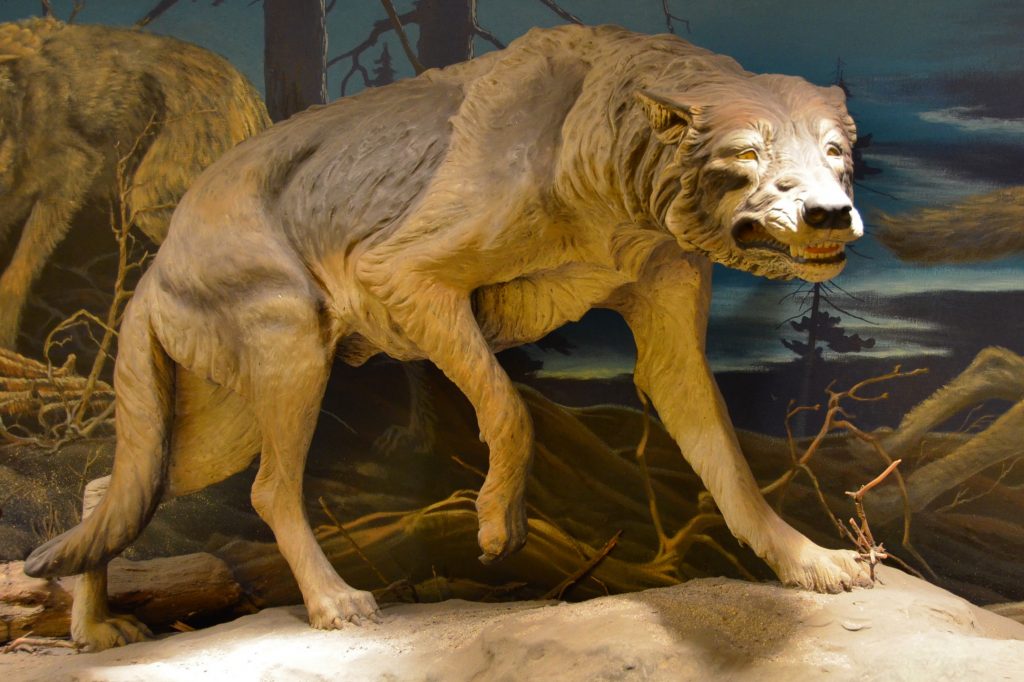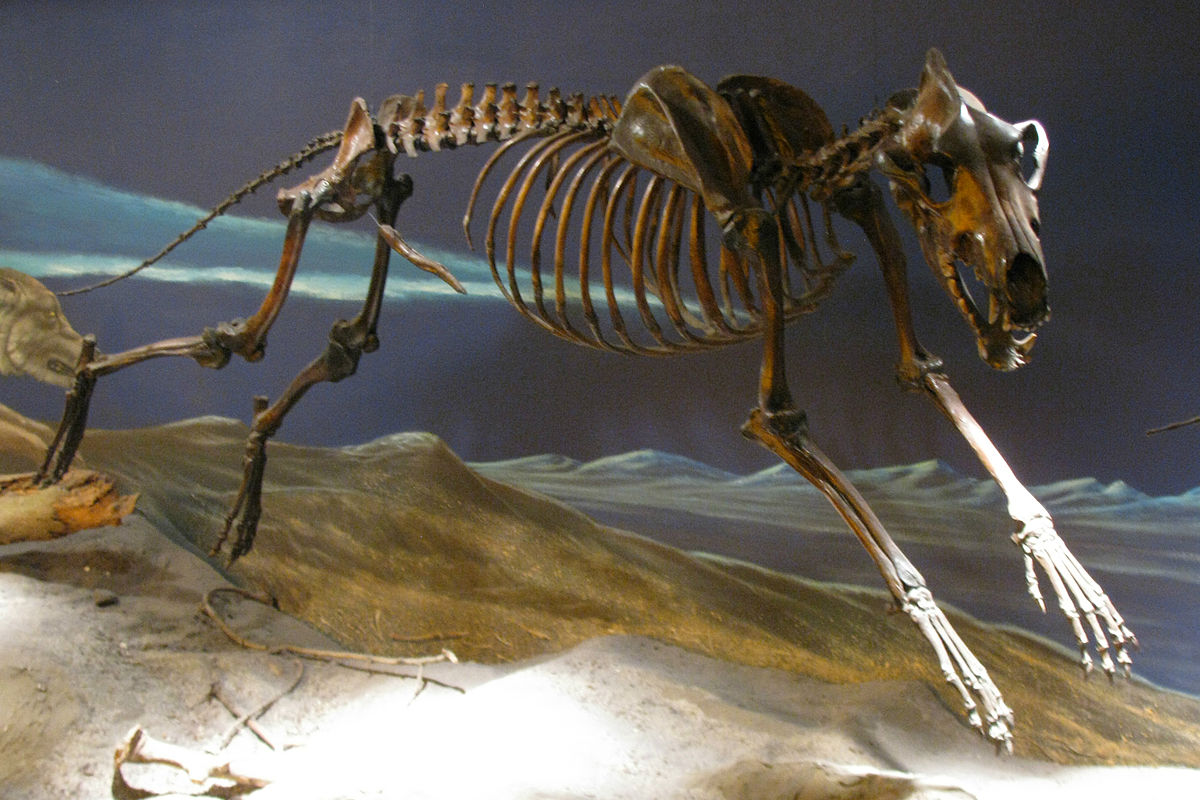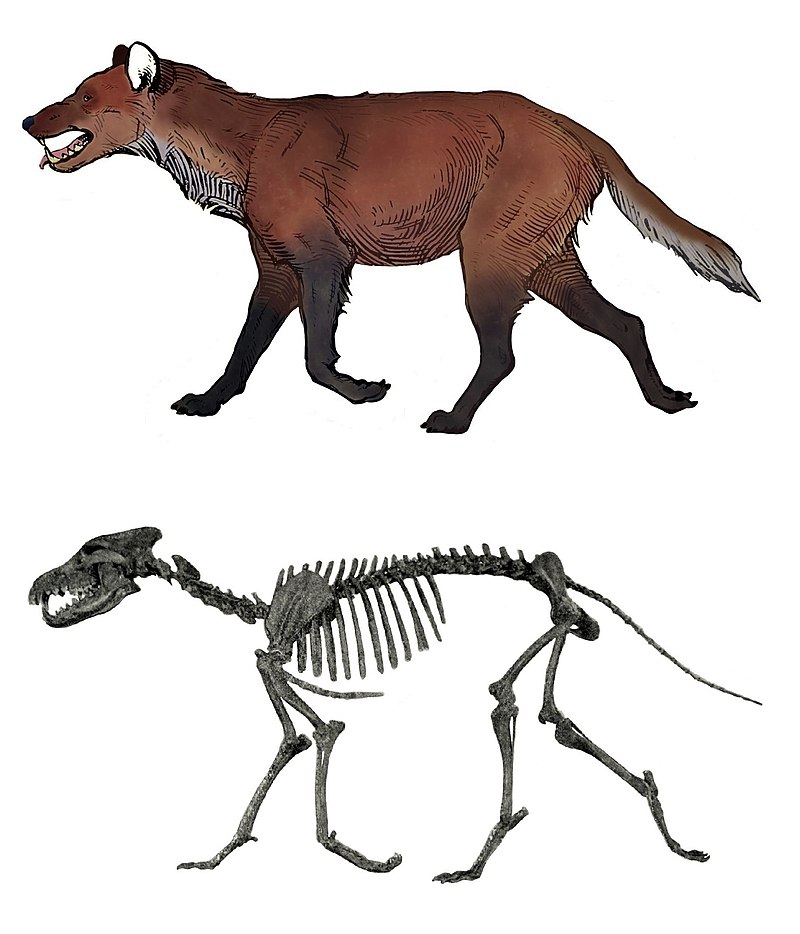
Research has revealed that dire wolves — one of the most well-known predators of the Pleistocene — were not actually wolves at all.
Dire wolves were one of the most widespread carnivores of the Ice Age, roaming North America from 250,000 years ago until their demise at the end of the Pleistocene around 13,000 years ago. Wolf-life in appearance and boasting a canine tooth bite force stronger than any other known Canis species, it seemed likely — and was widely accepted — that these animals were somehow related to today’s gray wolves.
However, genetic analysis has recently revealed that they belonged to an entirely new scientific classification.

Researchers gathered genetic samples from five fossil remains of the animals, dating from 13,000 to 50,000 years ago. It turns out that while similar in appearance, dire wolves actually diverged from the lineage that gave rise to wolves, coyotes and dogs an estimated 5.7 million years ago. “There is no evidence for gene flow between dire wolves and either North American grey wolves or coyotes. This suggests that dire wolves evolved in isolation from the Pleistocene ancestors of these species,” the authors of the study wrote.
Scientists have recommended that the animals are now classified as Aenocyon dirus, a name proposed over a century ago but disregarded by scientists at the time. Experts, like canid specialist and vertebrate paleontologist Xiaoming Wang, agree. “The Aenocyon genus was left in the historical dust bin, but it can be resurrected,” he told Science. “Based on the genetic data this team presents, I would support that reclassification.”
Dire wolves likely evolved in the Americas, while ancestors of grey wolves and coyotes evolved in Eurasia, colonizing North America only recently.
The 150-pound dire wolf went extinct, along with 90 other genera of mammals, roughly 13,000 years ago. It’s thought that their extinction was a result of the loss of their megaherbivore prey (like ancient horses, ground sloths, mastodons and bison) due to a changing climate, competition with other species, and hunting from humans.





